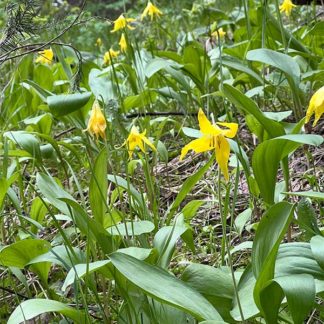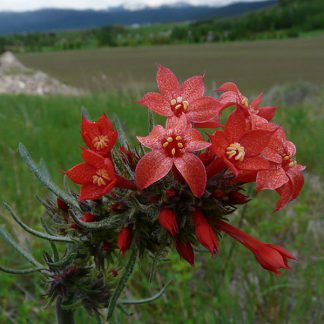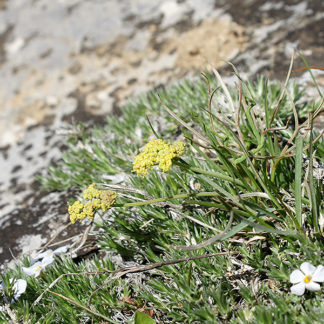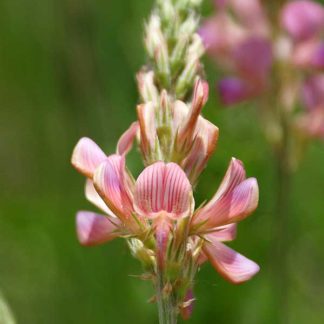with sagebrush
Showing 25–36 of 51 results
-

Erythronium grandiflorum / glacier lily
- striking, yellow, six tepals - recurved and nodding
- large, yellow or red anthers, a single pistil
- two large green basal leaves
- early spring
-

Fritillaria pudica / yellow bells
- small, lovely, unprepossessing lily
- a few, long, narrow leaves
- a single (or two) yellow, bell-shaped flower
- flowers turn brick red as they age
- blooms just after snowmelt and disappears quickly
-

Geum triflorum / prairie smoke
- among the earliest bloomers in the spring
- clusters of nodding reddish, pink, maroon or purple flowers
- flowers in groups of 3
- distinctive fruit - like silvery-pink or mauve "troll dolls"
- in large populations, fruiting plants look (sort of) like smoke
-

Hackelia patens / spotted stickseed
- small (but not teeny) white, 5-petaled flowers with delicate blue stripes at bases
- stamens arising from a "hole" in the middle of the flowers where petals are fused
- usually around sage, in early spring
- fruits are obnoxious - but small - burs (nutlets) that stick to everything
-

Ipomopsis aggregata / scarlet gilia
- bright red (usually), elongated, trumpet-like flowers; 5 petals
- late season (July, August) flowers may be white
- highly divided, comb-like leaves
- pollination by hummingbirds (red forms) and moths (white, late forms)
- smells bad but tastes good
-

Lithospermum ruderale / Columbia puccoon
- small, pale yellow flowers in early spring
- flowers in dense clusters, nestled among the leaves
- 1–3 in. long, linear leaves, notably crowded on upper part of stems
- in dry areas, especially with sagebrush
-

Lomatium dissectum / fernleaf biscuitroot
- blooms soon after snowmelt
- yellow or purple-ish flowers in compound umbels
- highly divided, fern-like leaves
- rocks, rocky soils, sagebrush communities
-

Lomatium triternatum / nineleaf biscuitroot
- flowers soon after snowmelt
- yellow compound umbel on leafless stem
- leaves are three-fold compound; leaflets grass-like
- may be tall with wide umbels on good soil
- may be very short with small umbels on rocky, sandy, low nutrient soil
-

Mertensia oblongifolia / sagebrush bluebell
- bright blue-to-purplish flowers, hanging and downward facing
- narrow tube that flares abruptly to bell
- blooms in very early spring, soon after snow-melt
- usually associated with sagebrush
-

Microsteris gracilis / slender phlox
- everything about it is teeny
- white or pink, 5-petal flowers ca. 2 mm diameter
- exposed, in early spring (ephemeral)
-

Onobrychis viciifolia / sainfoin
- forage legume, taller than alfalfa
- pink pea-like flowers with striped banner petal and darker keel
- spiky inflorescence (a raceme) blooming from bottom up - up to 50 flowers
- pinnately compound leaves with single terminal leaflet
- naturalized with sagebrush and mountain shrubs, but also in the central Valley
-

Opuntia polyacantha / starvation cactus
- yellow or peach, complex, many-petaled flowers
- large globose, pointed buds with reddish scales
- cactus pads with long or short spines and nasty glochids
Showing 25–36 of 51 results